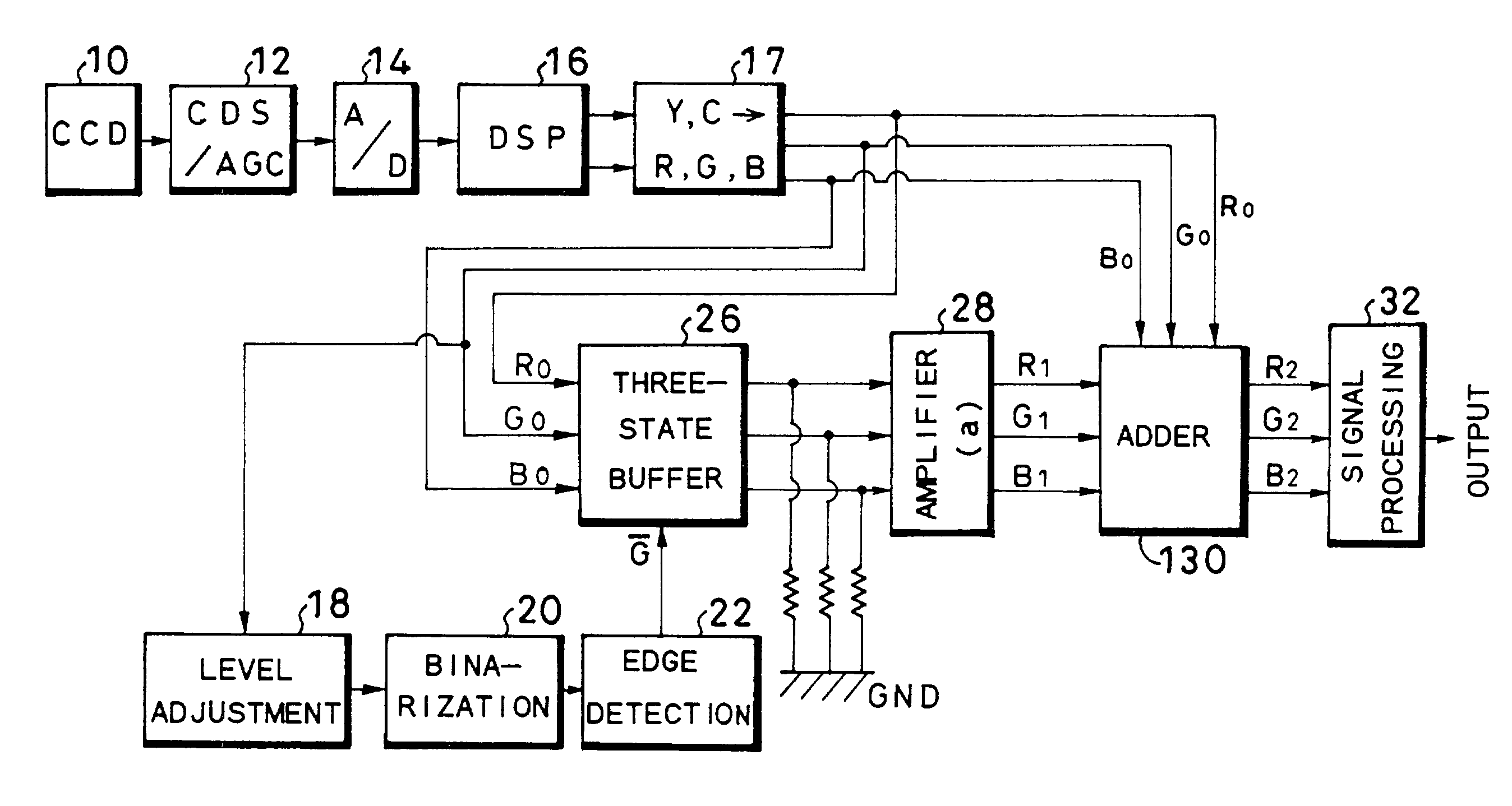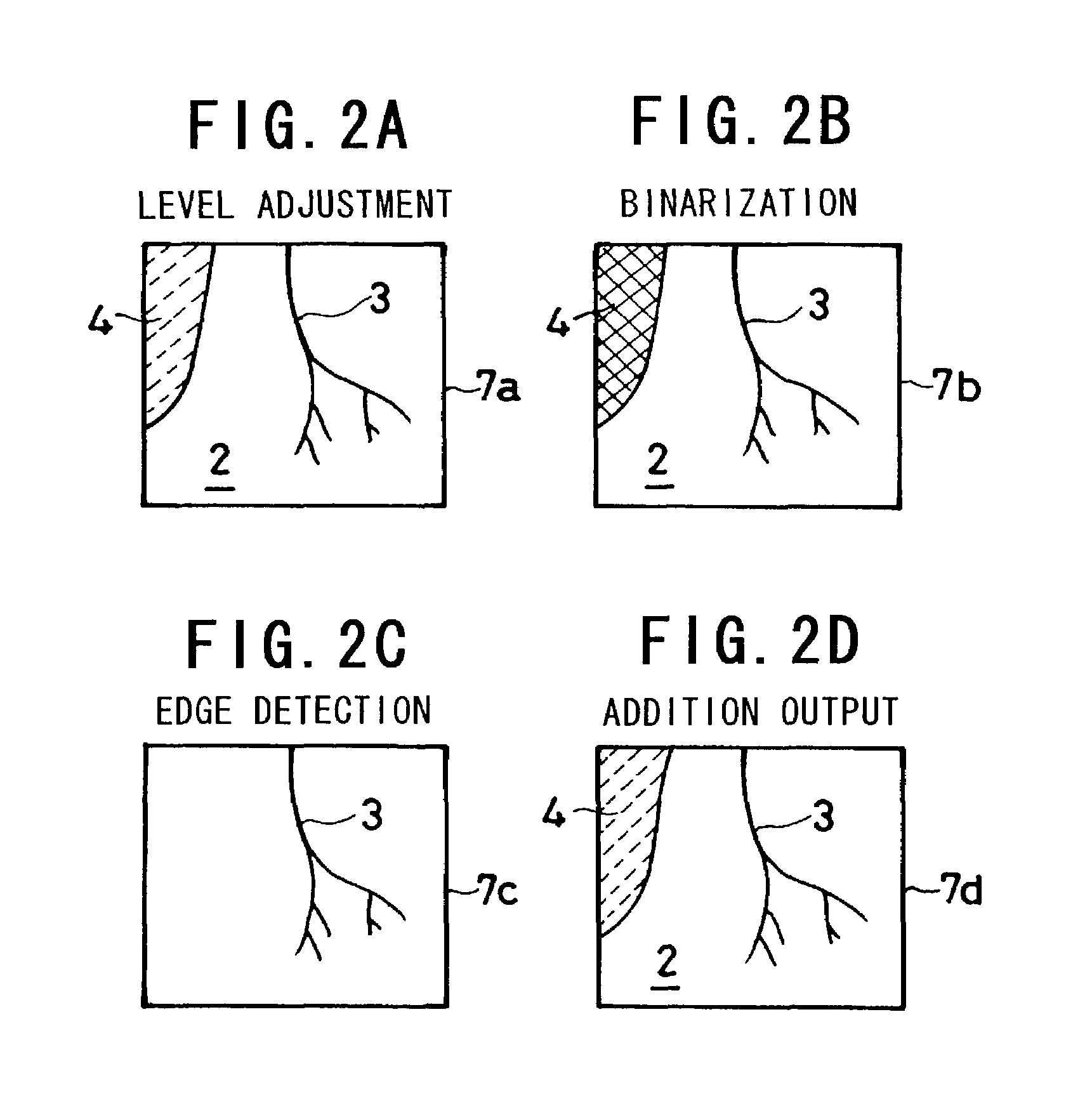Electronic endoscope for highlighting blood vessel
a technology of endoscopy and electronic endoscopy, which is applied in the field of image processing of electronic endoscopy, can solve the problems of difficult differentiation between blood vessel b>3/b> and other tissue such as mucous membrane b>2/b>
- Summary
- Abstract
- Description
- Claims
- Application Information
AI Technical Summary
Benefits of technology
Problems solved by technology
Method used
Image
Examples
first embodiment
[0029]FIG. 1 shows a configuration of part of an electronic endoscope according to a first embodiment and this electronic endoscope is, for example, of a synchronous type and is provided with a scope, a processor unit, a light source unit, a monitor and a recorder, etc. In this FIG. 1, a CCD 10, an image pickup element, is provided at a tip of the scope and this CCD 10 captures an image of an object through color filters on a pixel-by-pixel basis (e.g., Mg (magenta), G (green), Cy (cyan) and Ye (yellow)). That is, when light from the above-described light source unit is irradiated from the tip of the scope onto the object through a light guide, the image of this object is taken by the CCD 10. Furthermore, if an objective optical system with a built-in power scaling movable lens is provided, in front of this CCD 10, it is possible to obtain a magnified image of the object by driving this power scaling lens.
[0030]The above-described CCD 10 is followed by a CDS (Correlated Double Sampl...
second embodiment
[0041]FIG. 3 shows a configuration of a second embodiment of the present invention and this second embodiment reduces the chroma of images other than those of blood vessels. That is, as shown in FIG. 3, an inverter 23 is inserted between an edge detection circuit 22 and three-stage buffer 26, which inverts the output of the edge detection circuit 22 and supplies the inverted output to the three-state buffer 26. This three-state buffer 26 is followed by an amplifier 29 whose amplification factor “a” ranges from 0 to 1 and a subtractor 31.
[0042]According to this second embodiment, signals (position signals) of images other than those of blood vessels are extracted through an inversion operation of the inverter 23, and thus signals R0, G0 and B0 making up images other than those of blood vessels are extracted from the three-state buffer 26 and the respective color signals are amplified at an amplification factor “a” (029. That is, the amplifier 29 outputs R3=aR0, G3=aG0 and B3=aB0. The...
third embodiment
[0044]FIG. 4 shows a configuration of a third embodiment of the present invention and this third embodiment displays thickened blood vessels. As shown in FIG. 4, in addition to the configuration of the first embodiment, the third embodiment provides a frequency division circuit 24 that divides a clock signal and generates a slower clock signal and a latch circuit 25 that latches R0, G0 and B0 signals making up a blood vessel image using the outputs of this slow clock signal and the edge detection circuit 22. That is, the above-described frequency division circuit 24 divides the clock signal (frequency f1) input by, for example, 2 and the above-described latch circuit 25 gives a latch signal for doubling the thickness of the blood vessel to the three-state buffer 26 through a clock signal with a double cycle (frequency (f1 / 2)) and blood vessel signal.
[0045]As in the case of the first embodiment, according to this third embodiment, the G0 signal output from the color conversion circui...
PUM
 Login to View More
Login to View More Abstract
Description
Claims
Application Information
 Login to View More
Login to View More - R&D
- Intellectual Property
- Life Sciences
- Materials
- Tech Scout
- Unparalleled Data Quality
- Higher Quality Content
- 60% Fewer Hallucinations
Browse by: Latest US Patents, China's latest patents, Technical Efficacy Thesaurus, Application Domain, Technology Topic, Popular Technical Reports.
© 2025 PatSnap. All rights reserved.Legal|Privacy policy|Modern Slavery Act Transparency Statement|Sitemap|About US| Contact US: help@patsnap.com



